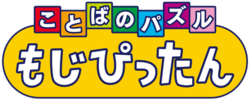
Mr. Driller is a puzzle video game franchise created by Yasuhito Nagaoka and Hideo Yoshizawa for Namco. The eponymous first game was released in 1999 for arcades and several home consoles, such as the PlayStation. Gameplay in the series consists of controlling Susumu Hori, the titular Mr. Driller, or one of his friends and destroying colorful formations of blocks to make it to the bottom of a well. In order to survive, players need to collect air capsules to replenish their depleting oxygen and avoid being crushed by falling blocks.

Klonoa is a platform video game series created by Namco in 1997. It stars Klonoa, an anthropomorphic creature who explores dream worlds. The series includes two main games: Klonoa: Door to Phantomile (1997) for the PlayStation and Klonoa 2: Lunatea's Veil (2001) for the PlayStation 2. A remake of Door to Phantomile was released for the Wii in 2008, and remasters of both games were released in 2022. The series also includes a set of handheld games released between 1999 and 2002 for the WonderSwan and Game Boy Advance.

Pac-Attack, also known as Pac-Panic, is a 1993 falling-tile puzzle video game developed and published by Namco for the Super Nintendo Entertainment System and Sega Genesis. Versions for the Game Boy, Game Gear and Philips CD-i were also released. The player is tasked with clearing out blocks and ghosts without them stacking to the top of the playfield — blocks can be cleared by matching them in horizontal rows, while ghosts can be cleared by placing down a Pac-Man piece that can eat them. It is the first game in the Pac-Man series to be released exclusively for home platforms.
Namco Museum is a series of video game compilations developed and published by Bandai Namco Entertainment for home video game consoles. The first title in the series, Namco Museum Vol. 1, was released for the PlayStation in 1995. Entries in the series have been released for multiple platforms, including the Game Boy Advance, PlayStation 2, PlayStation Portable, Nintendo DS and Xbox 360. the latest being Namco Museum Archives Vol. 2, released in 2020.

D3 Publisher Inc. is a Japanese video game developer and publisher founded on February 5, 1992. The company is known for the Simple series of budget-priced video games. Their games have been released for the Game Boy Advance, Nintendo DS, Nintendo 3DS, Nintendo Switch, PlayStation Portable, PlayStation Vita, PlayStation 2, PlayStation 3, GameCube, Wii, Xbox, Xbox 360, Wii U, Android, and iOS.

Polarium Advance is the sequel to the Nintendo DS puzzle game Polarium. Polarium Advance was developed by Mitchell Corporation for the Game Boy Advance. The object of the game is similar to that of Polarium. Black and white tiles fill a grid, and by drawing a single line in the grid, tiles can be flipped from black to white. Solid, horizontal lines of all black or all white tiles are erased, and the goal is to erase the entire grid in this manner. The game received a re-release on Wii U Virtual Console in late-2015/early-2016. The game was planned to be released in China for the iQue Game Boy Advance system, but this release was cancelled due to high piracy. However, the Chinese translation was fully completed, and it can be played through emulation. However, the game's DS predecessor was released in China.

Taiko no Tatsujin is a video game series created by Namco. In the games, players simulate playing a taiko drum in time with music. The series has released games for the arcade and for console and mobile platforms including PlayStation 2, Advanced Pico Beena, PlayStation Portable, Nintendo DS, Wii, Nintendo 3DS, Wii U, PlayStation Vita, PlayStation 4, Nintendo Switch, Xbox One, Xbox Series X/S, Microsoft Windows, iOS, Android and Japanese feature phones.

Namco Museum DS is a 2007 video game compilation developed by M2 and published by Namco Bandai Games. The game features 7 arcade games previously published by Namco along with a Nintendo DS version of the Nintendo-developed title Pac-Man Vs.

Sujin Taisen: Number Battles, known in North America as Number Battle, is a puzzle/strategy video game developed by Mitchell Corporation for the Nintendo DS handheld video game console. By the end of 2007, Sujin Taisen sold 21,996 copies.

Mr. Driller W is a 2009 puzzle video game developed and published for the WiiWare service by Namco Bandai Games. The eighth entry in the Mr. Driller series, gameplay revolves around clearing each level by destroying, or "drilling", large formations of colorful blocks. Players have an oxygen meter that acts as a time limit, and constantly depletes; air is replenished by collecting air capsules, and is depleted further by destroying brown "X" blocks.
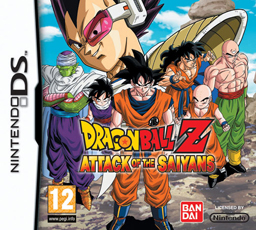
Dragon Ball Z: Attack of the Saiyans, known in Japan as Dragon Ball Kai: Saiyan Invasion, is a video game based on the Dragon Ball franchise for the Nintendo DS. It was released in Japan on April 29, 2009, and in Europe and North America in November 2009. The game is developed by Monolith Soft and distributed by Namco Bandai in North America ; it is one of the first games in the Dragon Ball franchise to be published by Namco Bandai, as the company would acquire the license from previous holder Atari in July of the same year.

Tank! Tank! Tank! is a 2009 third-person shooter arcade game developed and published by Namco Bandai Games. It was ported to the Wii U in 2012, where it was a system launch title in North America. Players control their respective tanks and must destroy opponents and giant mechanical monsters with a variety of weapons, such as machine guns and rocket launchers. Its gameplay has been compared to titles such as the Earth Defense Force series, through its usage of B-movie tropes and parodying.
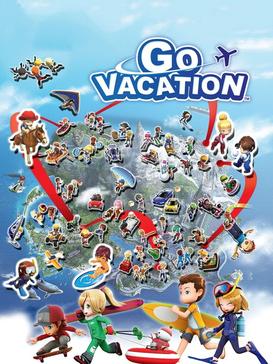
Go Vacation is a 2011 party video game developed and released by Bandai Namco Games for the Wii and Nintendo Switch. It is the third game in the We Ski series and a spin-off to the prior two main titles. Up to four players can compete against each other in over 50 sport-based minigames that take place in four fictional island resorts. Minigames range from activities such as kayaking and horseback riding, to activities like table hockey and minigolf. Different resorts can be accessed using vehicles such as trolleys and bicycles. Players can customize the outfit of their avatar and decorate their house with furniture.

epics Inc. is a Japanese video game software developer located in Tokyo, Japan. Originally established as Gen Creative House Co., Ltd. in February 1987, changed company name to G-Artists Inc. in March 1991, then to epics Inc. in June 2006.

Paon DP Co., Ltd. (株式会社パオン・ディーピー) is a Japanese video game developer. The company was founded in August 2004 as DP Inc. and merged with Paon Corporation, Ltd. in March 2015 to form Paon DP.
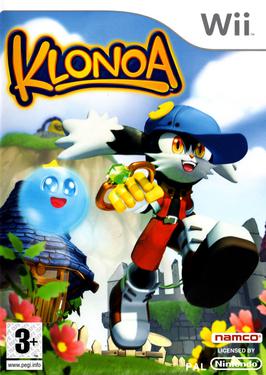
Klonoa is a side-scrolling platform video game for the Wii developed by Paon and published by Namco Bandai Games. It is a remake of the 1997 PlayStation game Klonoa: Door to Phantomile, the first game in the Klonoa series, updating the game with fully 3D graphics, additional content, and gameplay changes. It was released in Japan in December 2008 and in North America and Europe in May 2009.
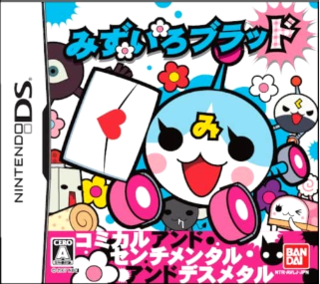
Mizuiro Blood is a hybrid edutainment/minigame compilation video game developed and released in Japan for the Nintendo DS by Namco Bandai Games in 2007.
